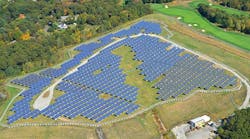Distributed solar photovoltaic (PV) power generation combined with energy storage systems promises enticing alternatives to relying on baseload utility power between now and 2026. A new report from Navigant Research forecasts that the global annual market for PV and storage systems will exceed $49 billion by 2026.
Navigant’s report, Distributed Solar PV Plus Energy Storage Systems, examines the global market for distributed solar PV plus energy storage (Navigant uses the acronym DSES), providing an analysis of market issues and market forecasts for capacity and revenue, through 2026.
The research firm said many customers in both residential and commercial and industrial (C&I) markets are beginning to shift away from solely purchasing electricity from their local utilities to procuring a diverse suite of onsite technologies that includes solar PV coupled with energy storage. Navigant’s researchers also proposed that as residents in remote locations without reliable grid electricity service are expected to use this technology to meet basic daily needs.
Navigant concluded that DSES revenues should be expected to reach 27.4 GW and $49.1 billion by 2026.
“An emerging confluence of technical, economic, and regulatory factors is beginning to drive growth in the residential, C&I, and remote, off-grid DSES markets,” says William Tokash, senior research analyst with Navigant Research. “Beyond this, coupling battery energy storage technology with solar PV and virtual power plant (VPP) software technology will allow this class of DER to be dispatchable from a grid operator standpoint to address intermittency and provide grid services as well.”












